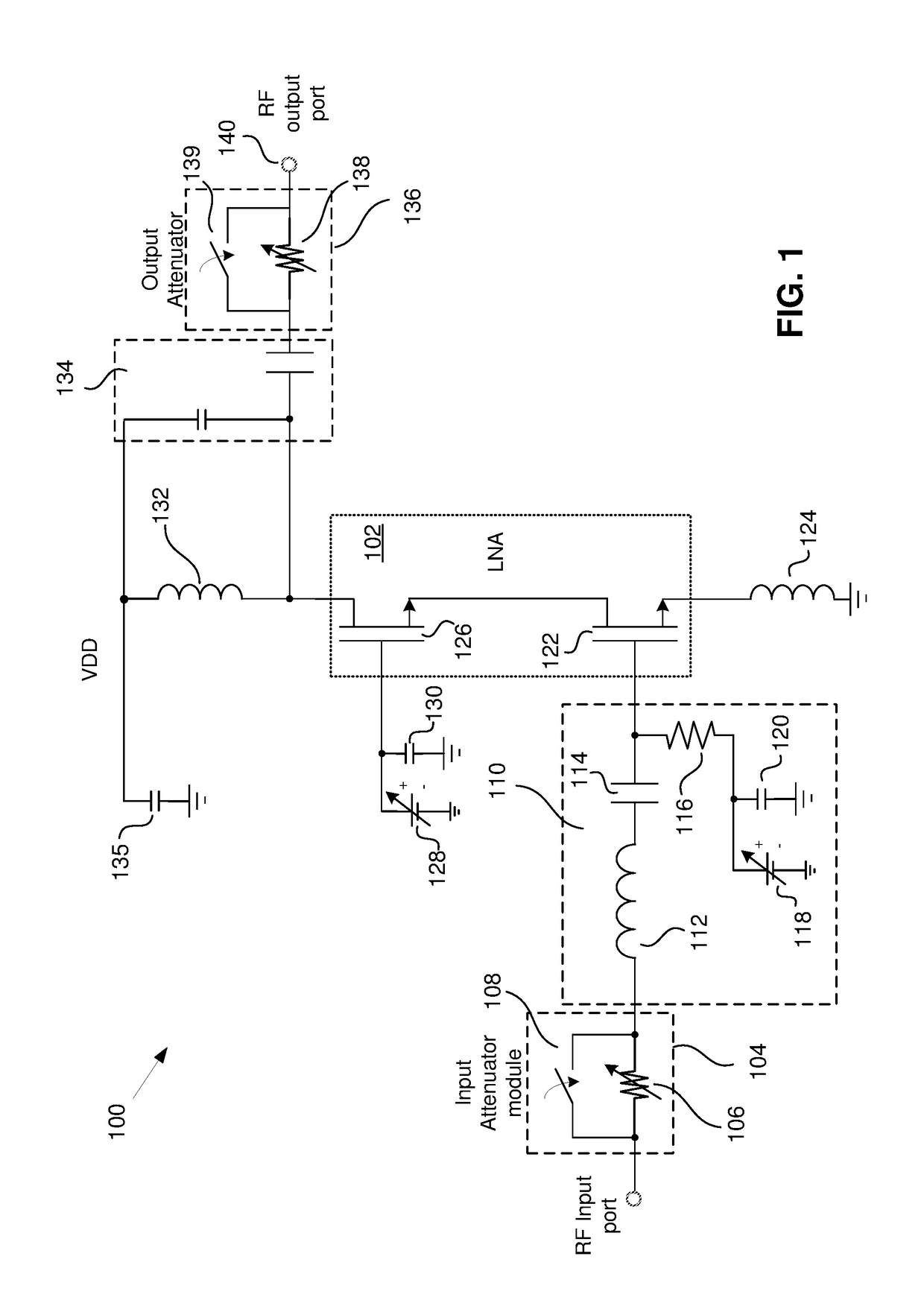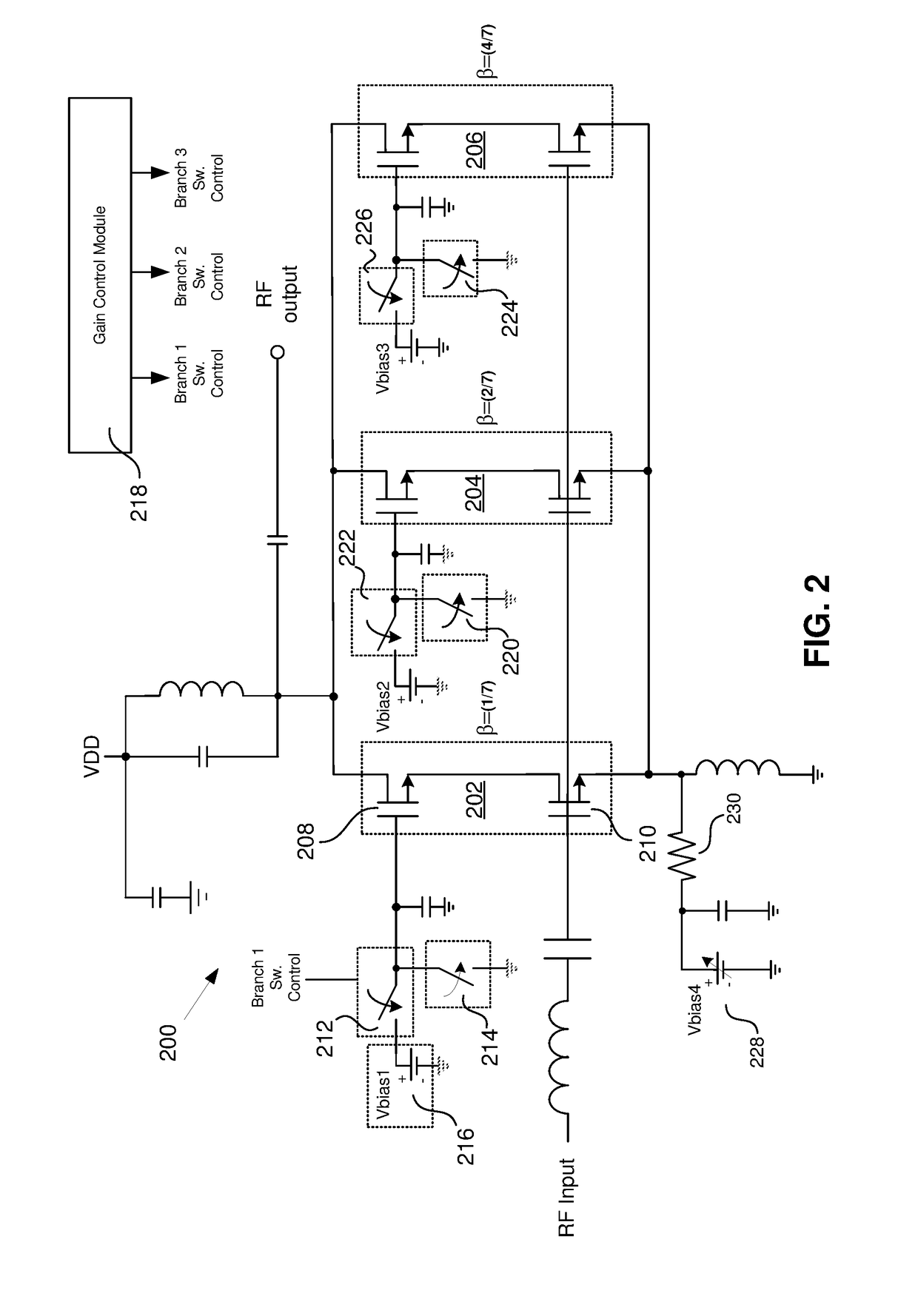LNA with Programmable Linearity
a linearity and programmable technology, applied in the field of amplifiers, can solve the problems of reducing the gain in this manner, limiting the data rate at which information modulated on a signal can be accurately demodulated, and affecting the overall performance of the overall receiver, so as to reduce the gain of the lna
- Summary
- Abstract
- Description
- Claims
- Application Information
AI Technical Summary
Benefits of technology
Problems solved by technology
Method used
Image
Examples
Embodiment Construction
[0030]FIG. 2 is an illustration of an LNA 200 of one example of a communications receiver capable of operating in several gain modes. The LNA 200 comprises a plurality of amplifier branches 202, 204, 206, each branch having an amplifier. The inputs to each of the amplifier branches are coupled together. In some embodiments, a first FET 210 is configured as a common-source amplifier (i.e., “driver”) and a second FET 208 is configured as a common-gate amplifier (i.e., “cascode”). Alternatively, each amplifier branch can be configured as a single common source device or a stack of FET devices. In some embodiments, the branches include combinations of the above configurations. For the sake of simplicity, a cascode LNA is described in more detail below. However, it should be understood that the following description applies equally to other configurations of amplifier branches.
[0031]In some embodiments, each branch 202, 204, 206 has a “binary-weight”β. Accordingly, in some such embodimen...
PUM
| Property | Measurement | Unit |
|---|---|---|
| bias currents | aaaaa | aaaaa |
| bias currents | aaaaa | aaaaa |
| bias currents | aaaaa | aaaaa |
Abstract
Description
Claims
Application Information
 Login to View More
Login to View More - R&D
- Intellectual Property
- Life Sciences
- Materials
- Tech Scout
- Unparalleled Data Quality
- Higher Quality Content
- 60% Fewer Hallucinations
Browse by: Latest US Patents, China's latest patents, Technical Efficacy Thesaurus, Application Domain, Technology Topic, Popular Technical Reports.
© 2025 PatSnap. All rights reserved.Legal|Privacy policy|Modern Slavery Act Transparency Statement|Sitemap|About US| Contact US: help@patsnap.com



